VOID OF A MISFIT
ART DIRECTION • AUDIO • VIDEO • TIME BASED • PROJECTION MAPPING
An immersive installation exploring the intersection of disability, perception, and dimensional consciousness.
CONCEPT
The installation creates a transformative portal that exists beyond conventional spatial and cognitive boundaries, exploring the liminal dimensions of perception and identity. Through a carefully constructed environment—massive black-painted walls, a 96-inch t-shirt canvas, UV lights, and atmospheric haze—the work manifests an internal landscape that mirrors the fluctuating experiences of bodily sensation, particularly the complex lived experience of navigating diabetes.
Language becomes a metaphorical wormhole in this space, where the concept of "misfit" is physically embodied through oversized garments and projected visuals. The installation deliberately makes visible the invisible—transforming the imperceptible nuances of disability, blood sugar variations, and internal cognitive states into a tangible, immersive experience. By warping spatial orientation and sensory perception, the work invites participants to explore alternative modes of understanding embodiment, agency, and the intricate terrains of internal experience.
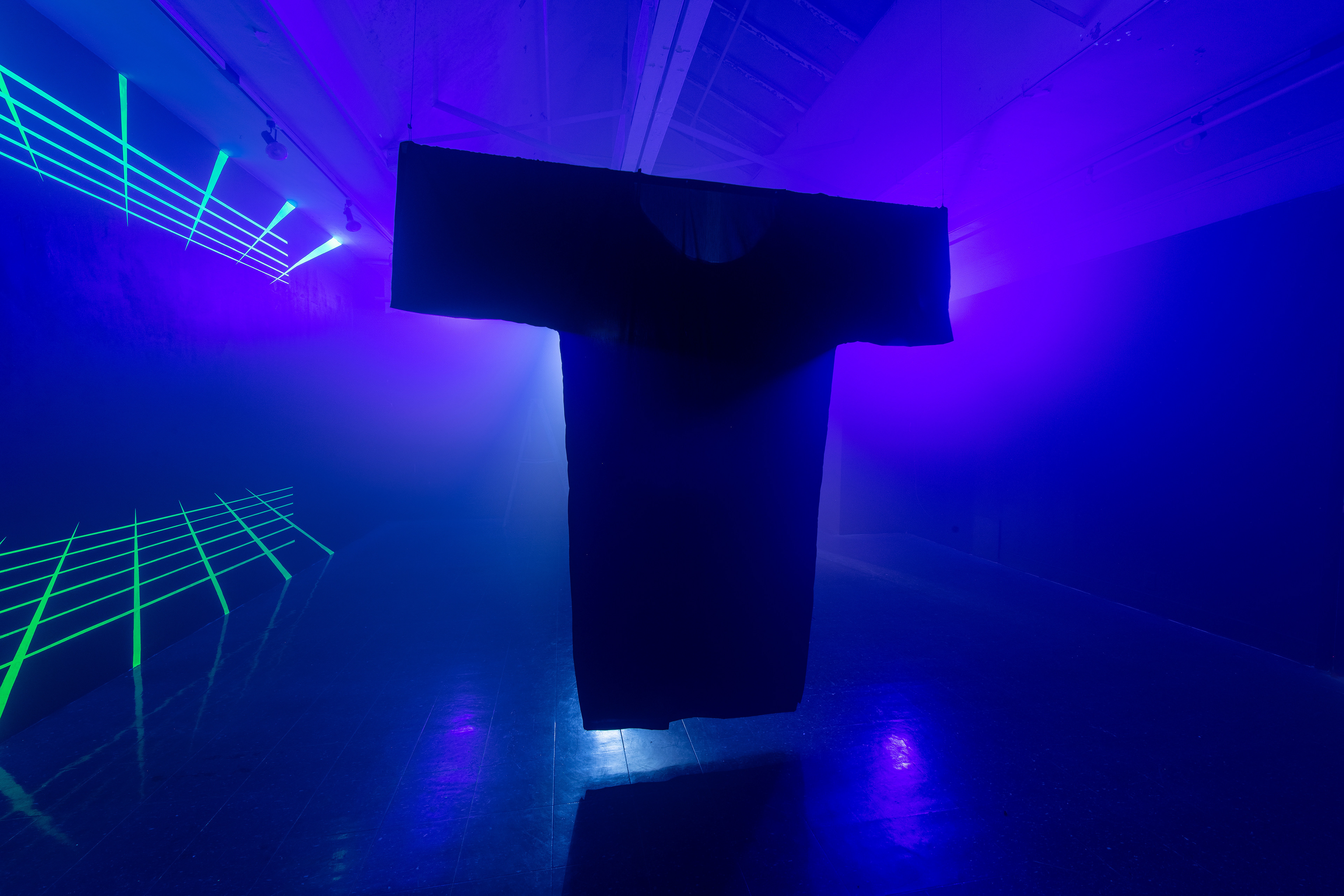
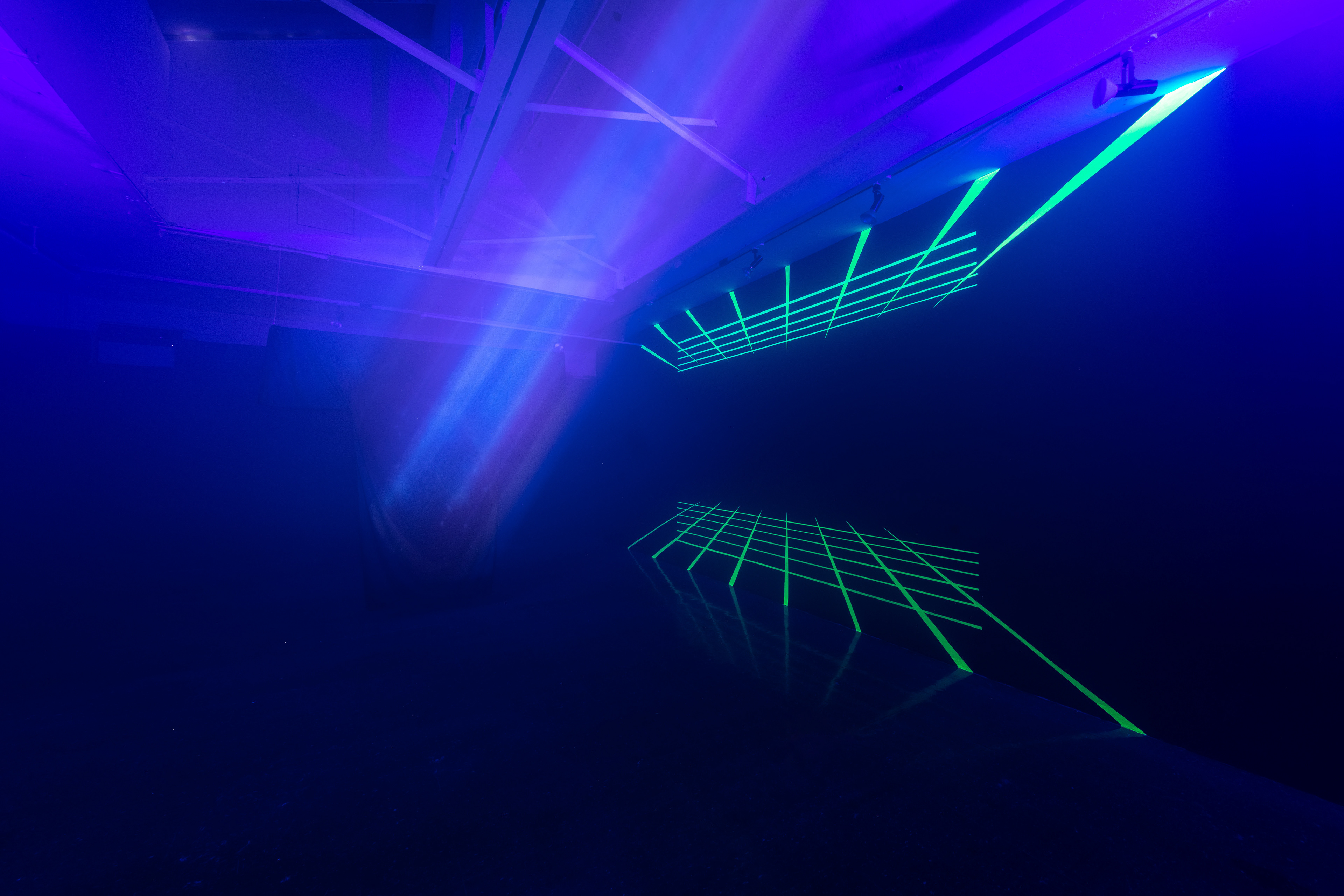
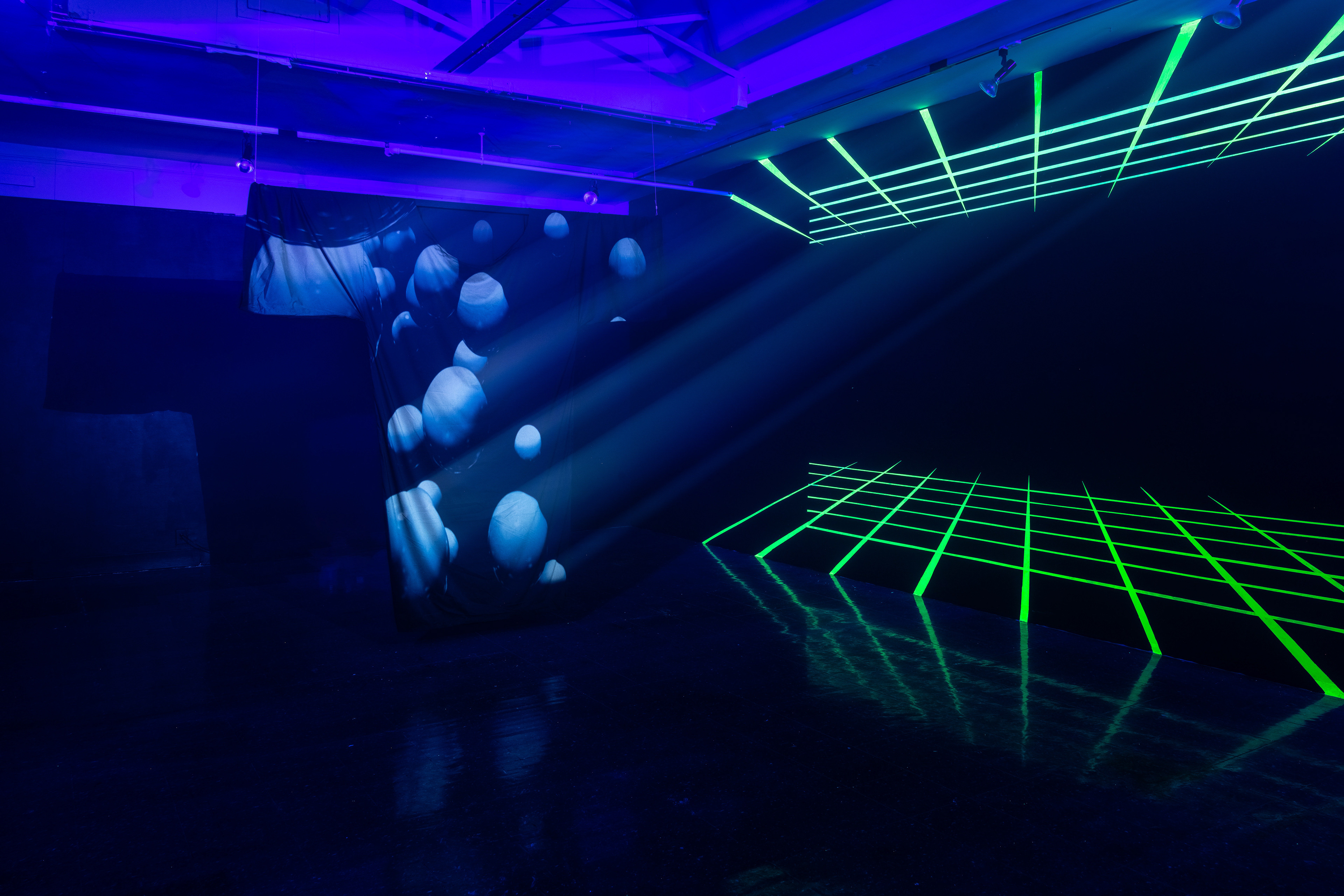
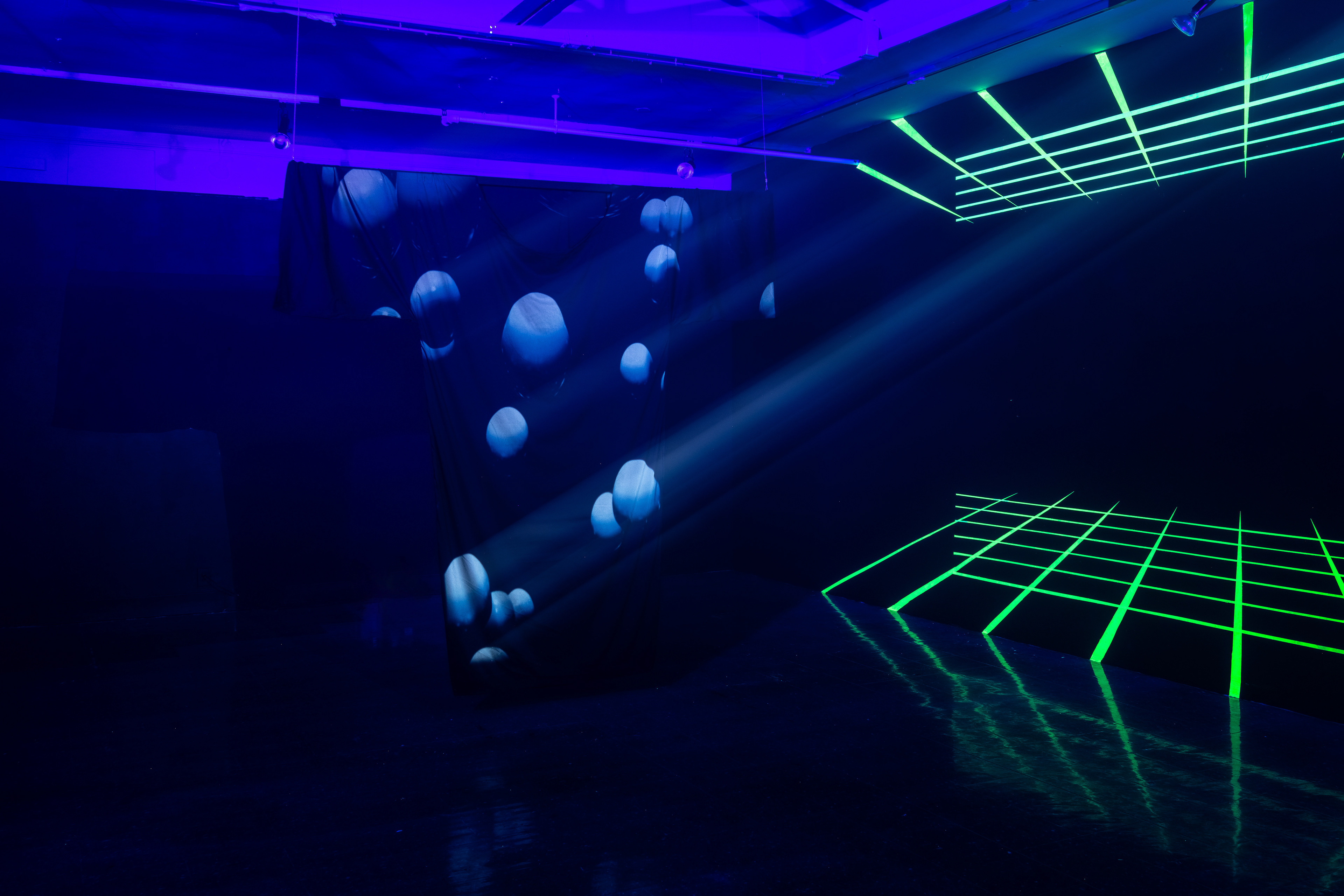
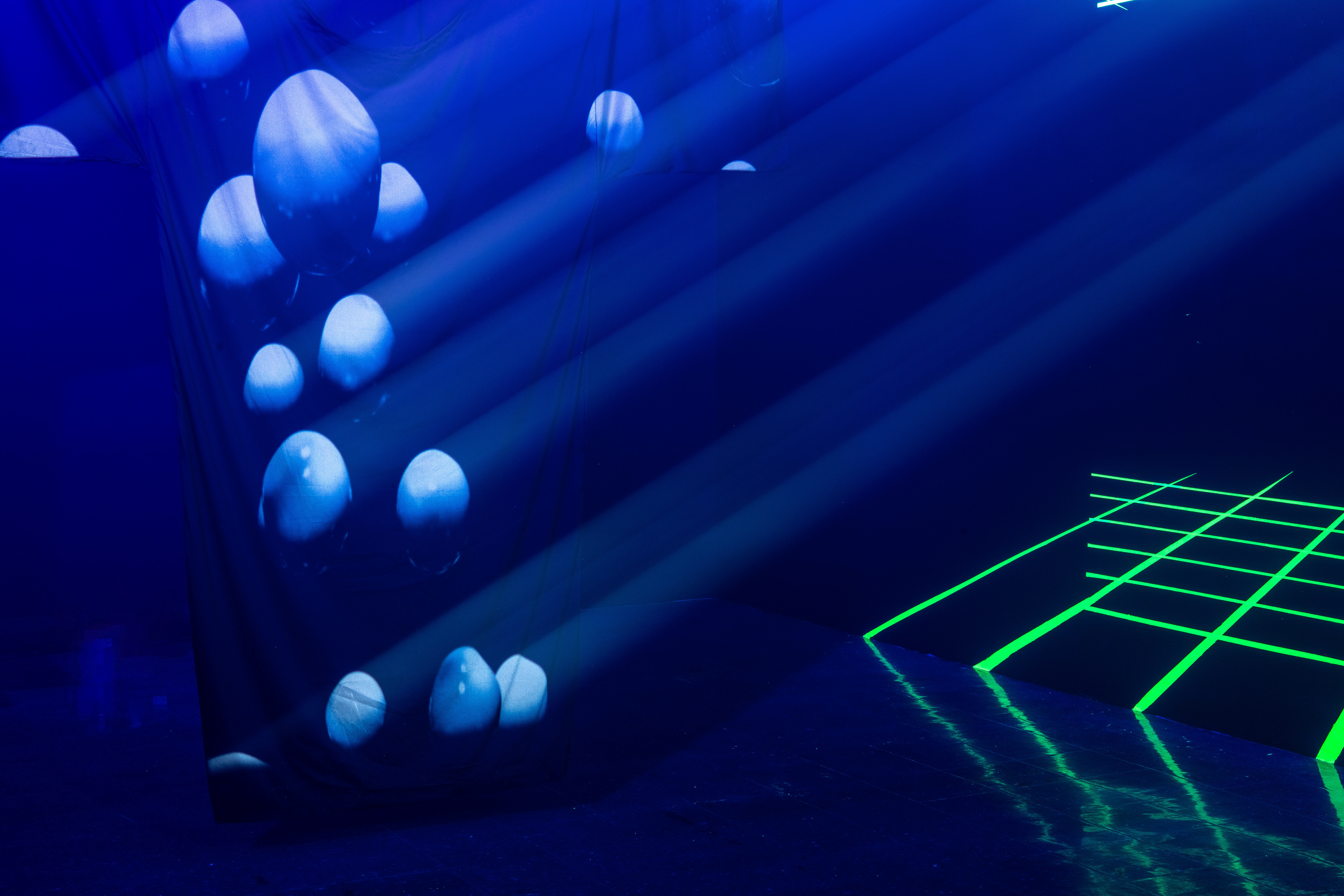
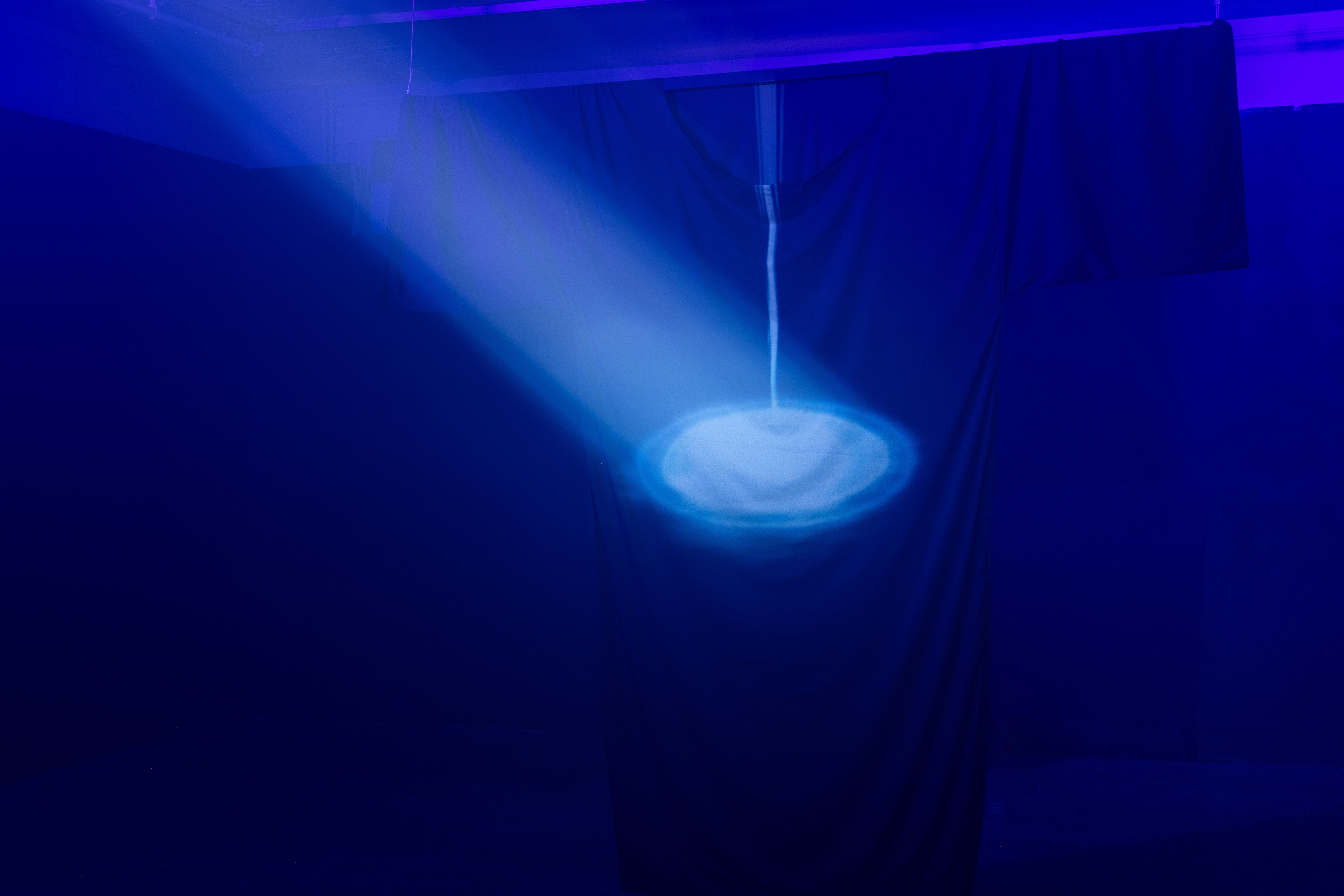
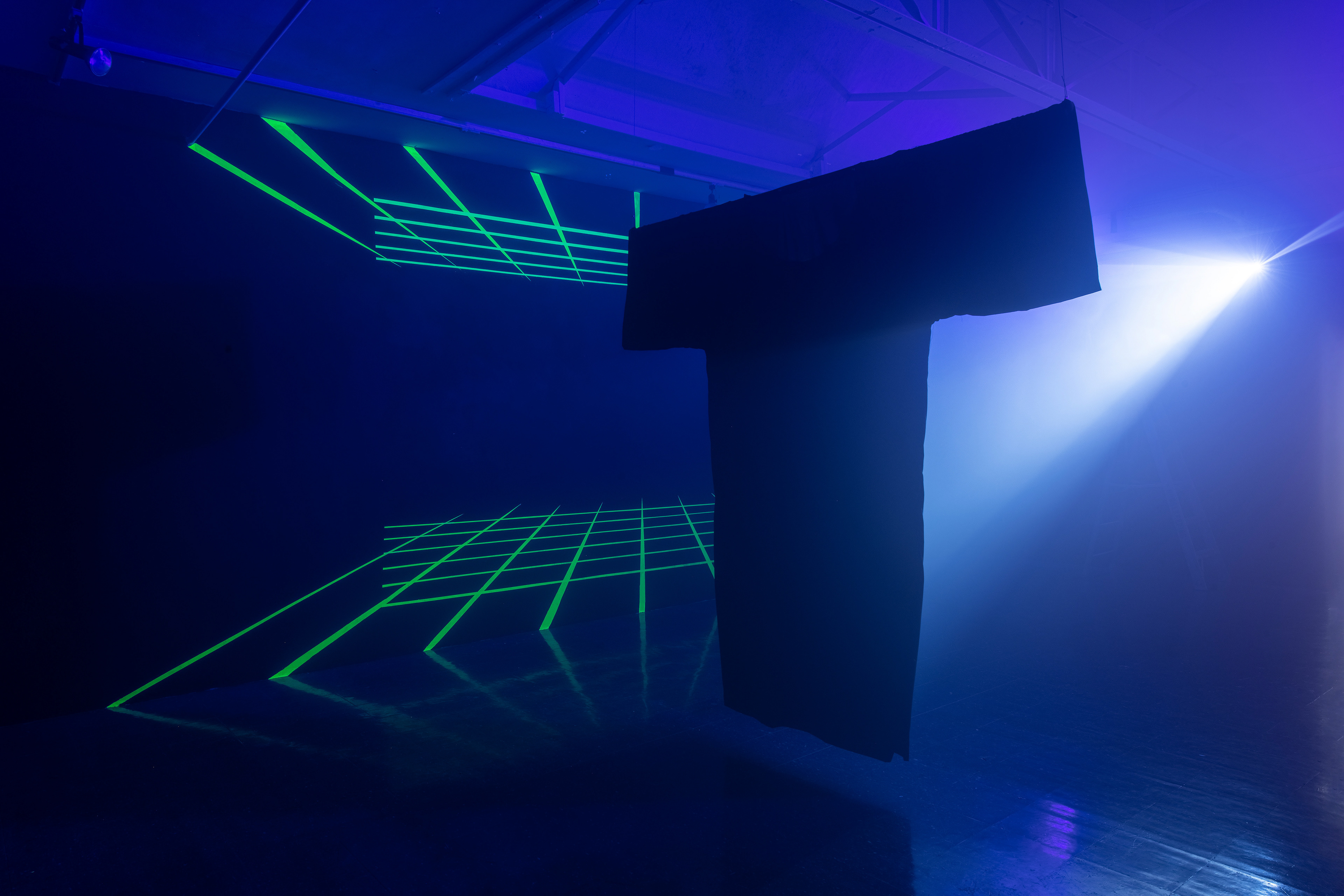
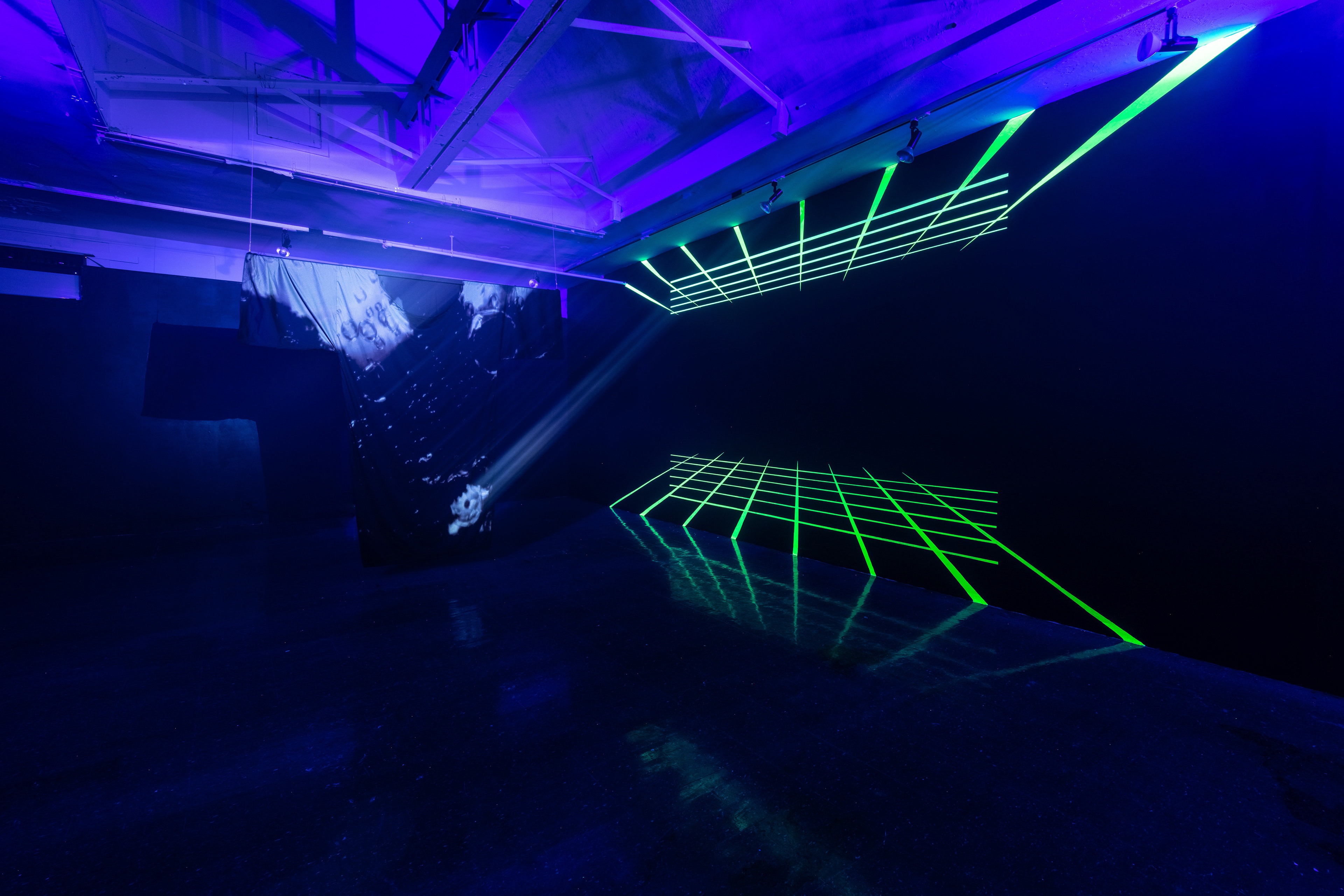
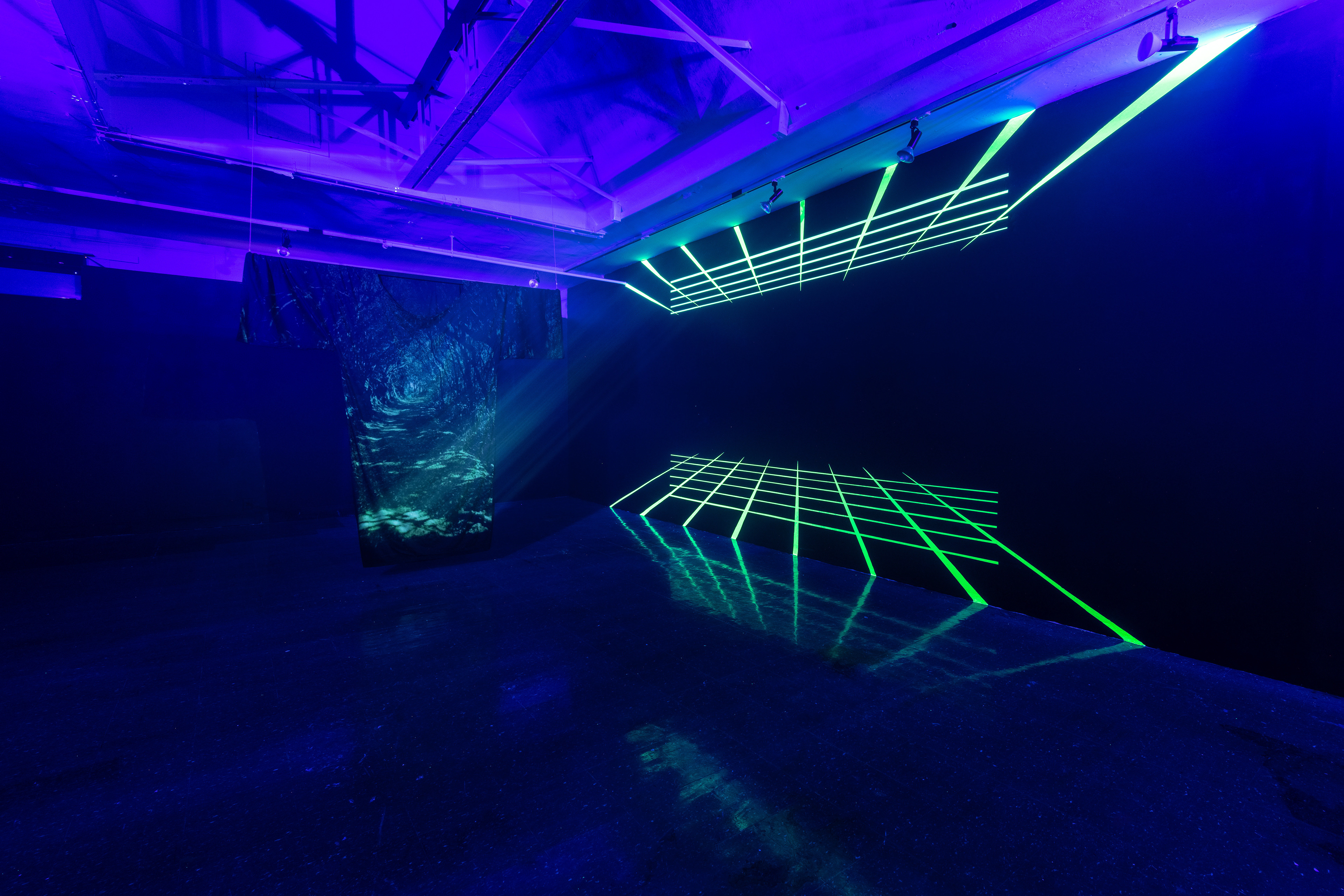
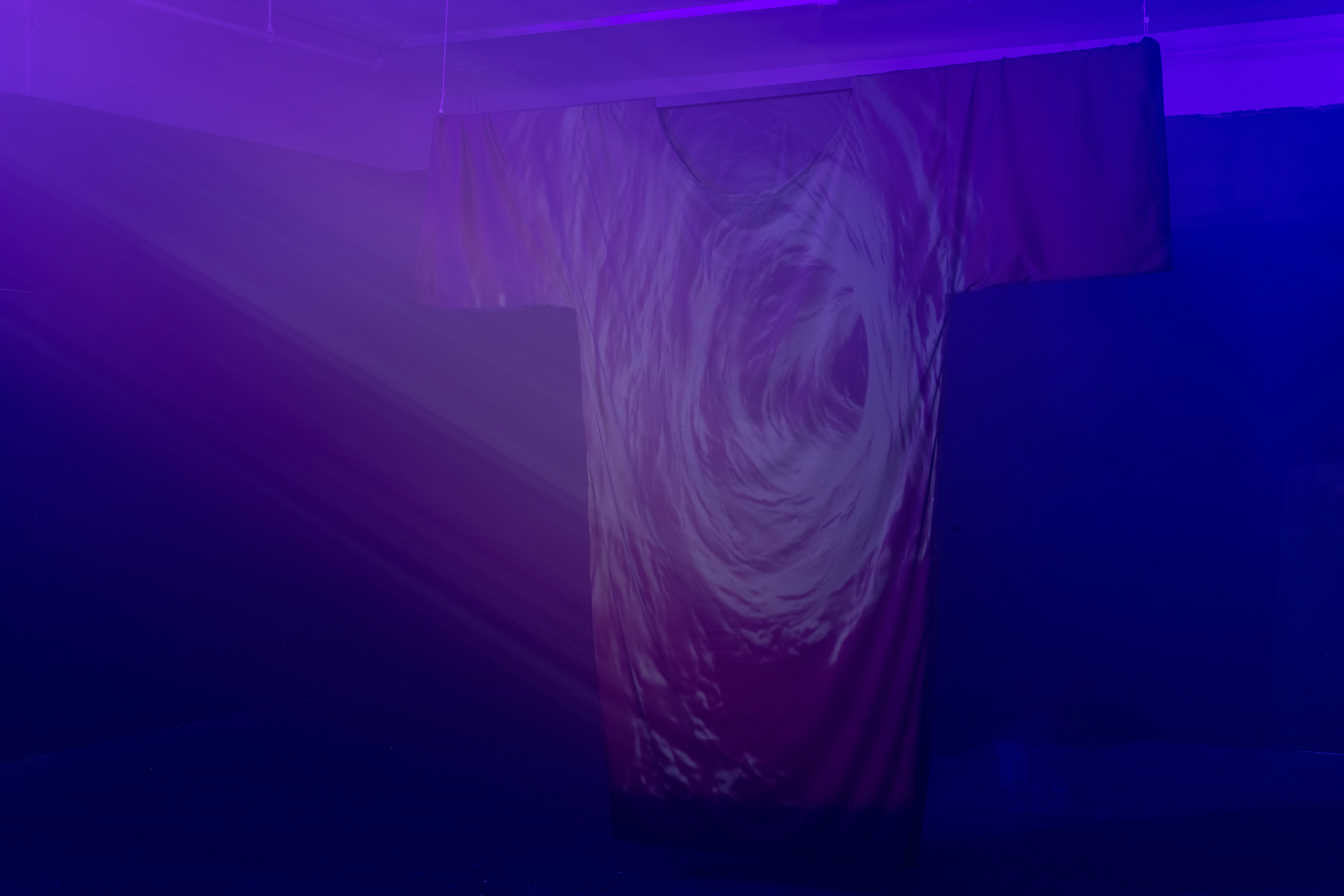
MATERIALS
UV lighting
American DJ Entourage 1500W Mobile DMX Fog Machine
Acrylic luminescent paint
Resolume (projection mapping)
Sony SSCS5 3-Way 3-Driver Bookshelf Speaker System
ELEMENTS
Custom garment form
Spatial grid system
Audio-visual sync
Environmental design
EXHIBITION
The Anderson Gallery
SPACE
Custom-build environment with complete light control
DURATION
April 29—May 14 2022
Closed Room: I am
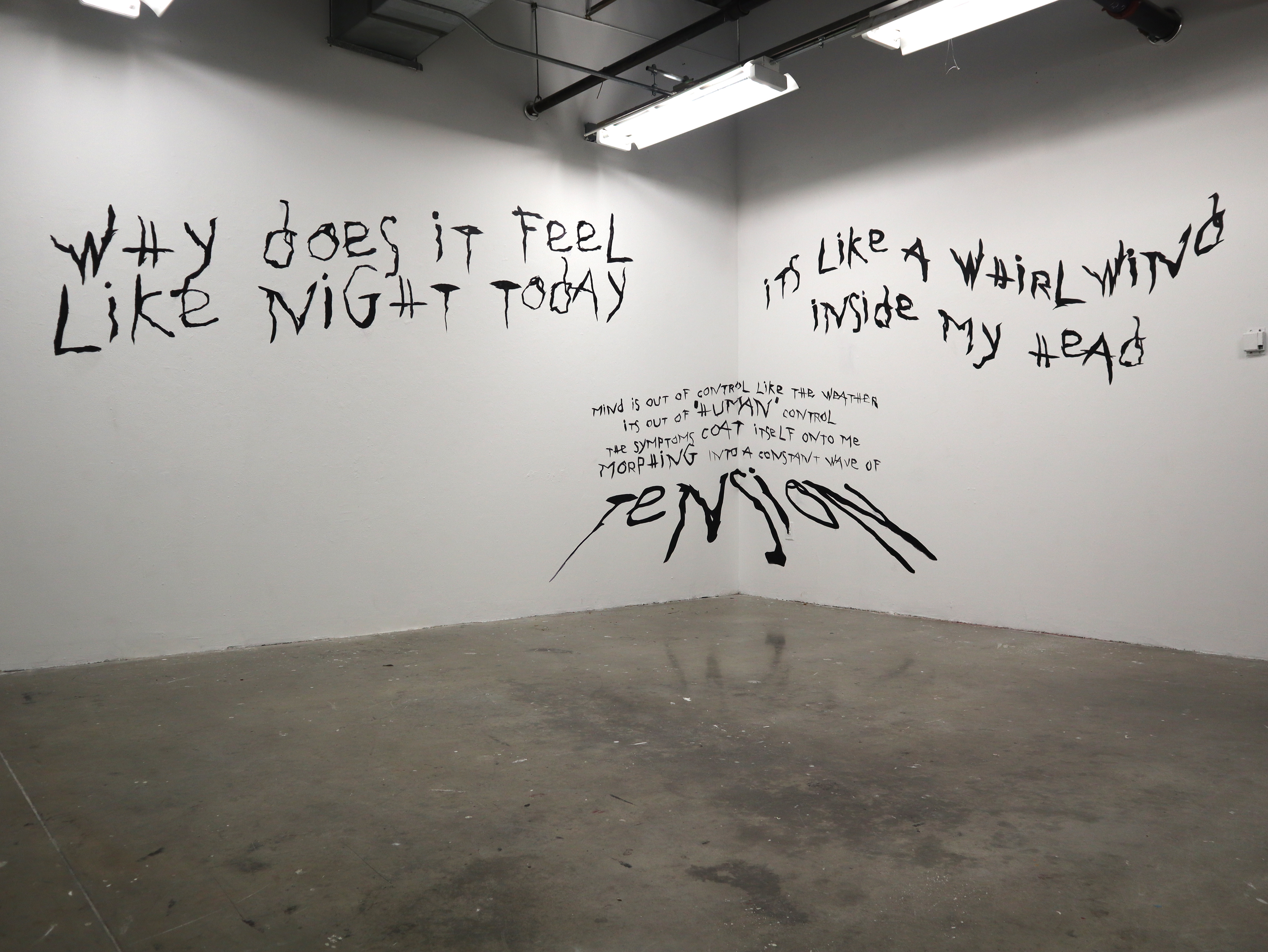
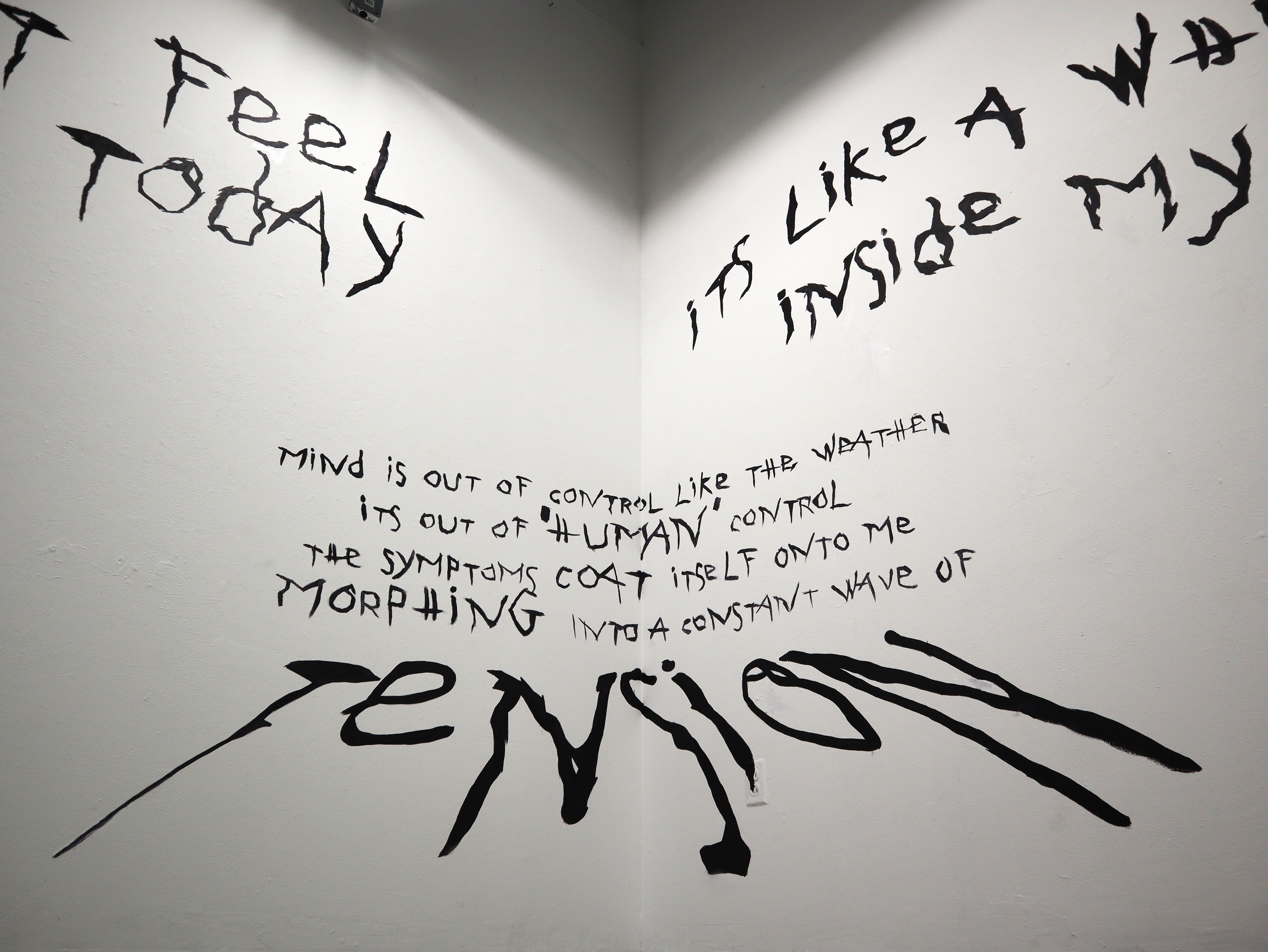
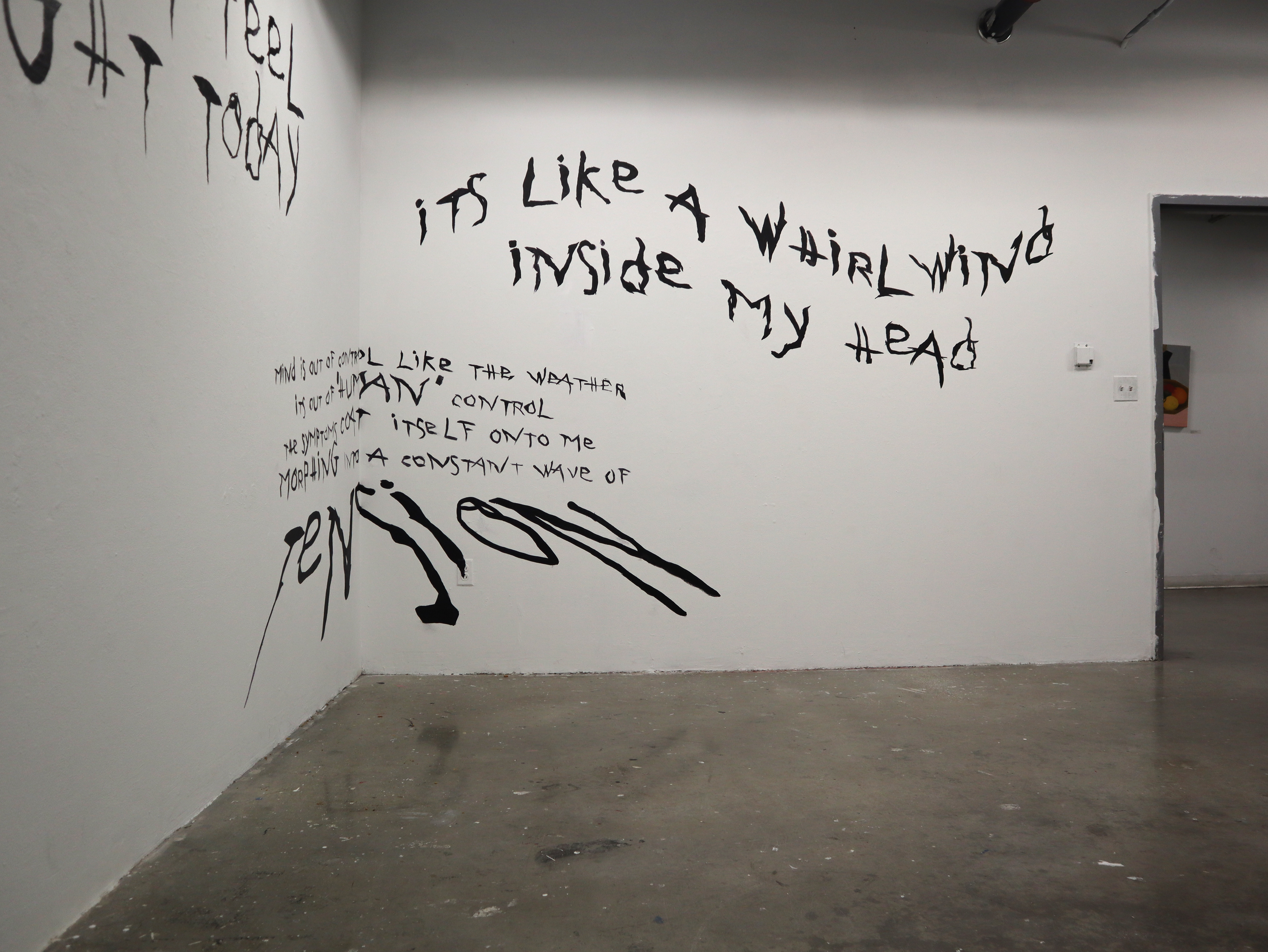
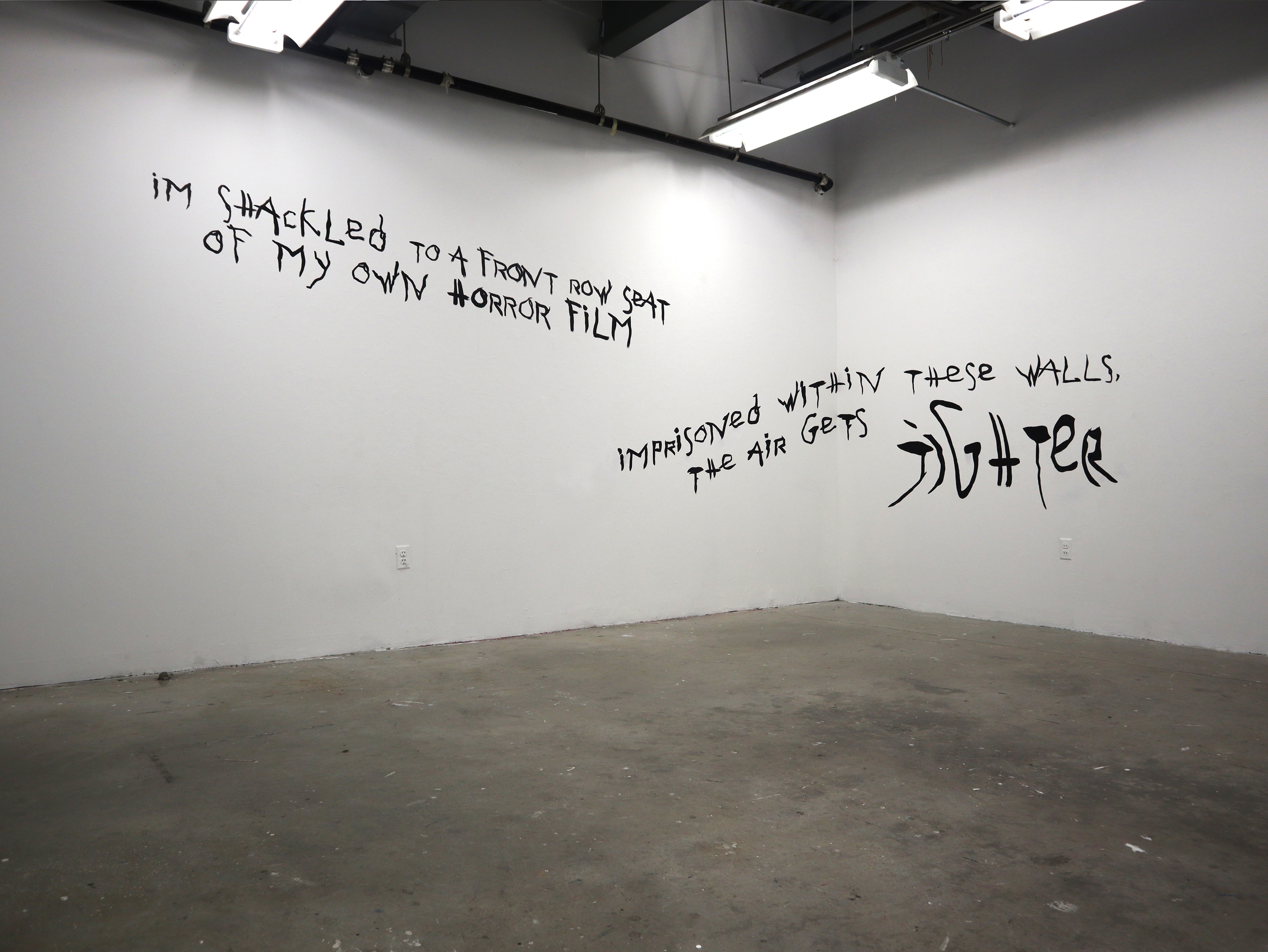
CONCEPT
My research installation, "The Closed Room: I Am," emerged as a critical design methodology to investigate the intersections of personal identity, bodily experience, and social discourse. Grounded in my lived experience as a Black Muslim with type-1 diabetes, the project serves as a research probe into how designed spaces can facilitate vulnerable and transformative conversations about embodied identities.
By intentionally constructing a space strewn with snippets of thought in a jagged typeface, I created a methodological framework for exploring how design can trigger emotional and intellectual engagement. My research objectives centered on examining how spatial design can create safe spaces for discussing complex identities, investigating the role of typography in mediating personal narratives, and exploring how designed environments can facilitate discussions around body autonomy, disability, race, and gender.
The installation transformed into a collaborative research site where participants brought their own experiences, blurring the boundaries between researcher and subject. By creating a space of vulnerability, the project enabled critical dialogues about identity that transcend individual experiences, demonstrating design's potential as a powerful tool for social understanding and collective storytelling.
MATERIALS
Acrylic black paint
Birth to Burnout
CONCEPT
My research installation, "Birth to Burnout," critically interrogates the systemic mechanisms of labor exploitation, bodily exhaustion, and the socio-economic constructs that consume human potential. Using design as a critical research methodology, the project examines how individuals—particularly those with marginalized identities—are systematically depleted by dominant work structures, revealing the intricate ways social systems extract and commodify human vitality.
The metaphorical use of spinach becomes a central research probe into the broader systemic dynamics of resource extraction and performative inclusivity. Just as spinach is stripped of its nutritional essence and repurposed for aesthetic or textural conformity, the installation explores how human beings are similarly processed—their essential energy consumed and reconfigured to meet external productivity demands. This research interrogates the linguistic and structural mechanisms that transform individual agency into a consumable resource, questioning the power dynamics that render human experience as a negotiable commodity within capitalist frameworks.
By creating a deliberately provocative spatial design, the installation functions as a research instrument that exposes the subtle violence of normalized burnout culture. The work challenges viewers to recognize how language operates not merely as communication, but as a sophisticated mechanism of control—a weaponized system that simultaneously pacifies and mobilizes individuals into continuous, often invisible labor. Through this critical design approach, the research seeks to deconstruct the normalized narratives of productivity, revealing the profound human cost of systemic exhaustion.



MATERIALS
American DJ Entourage 1500W Mobile DMX Fog Machine
Vinyl
Projector
Sony SSCS5 3-Way 3-Driver Bookshelf Speaker System